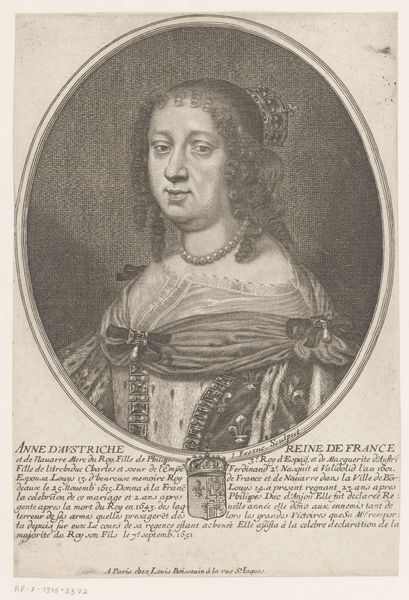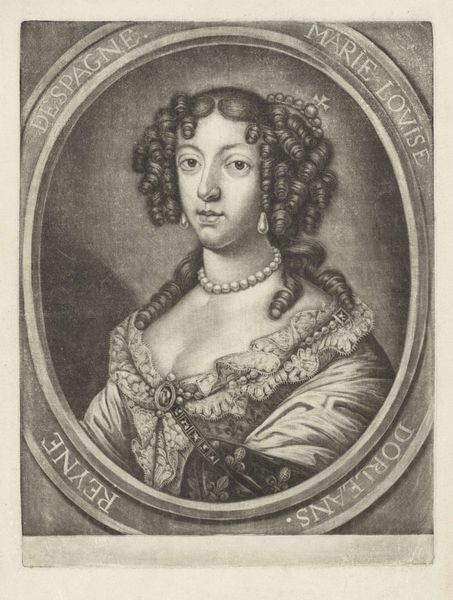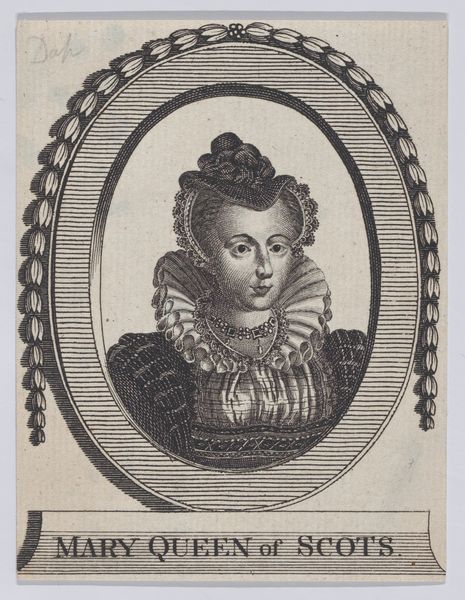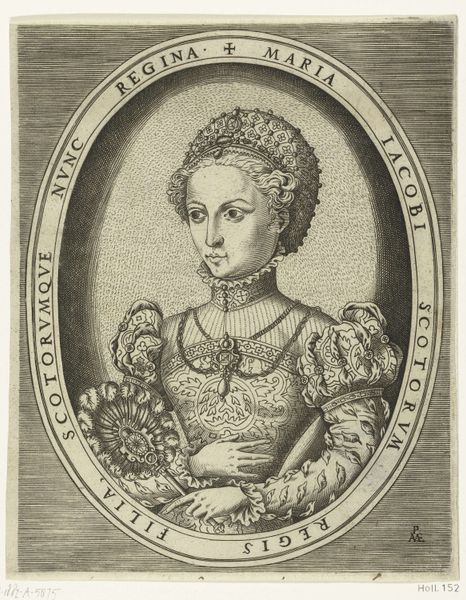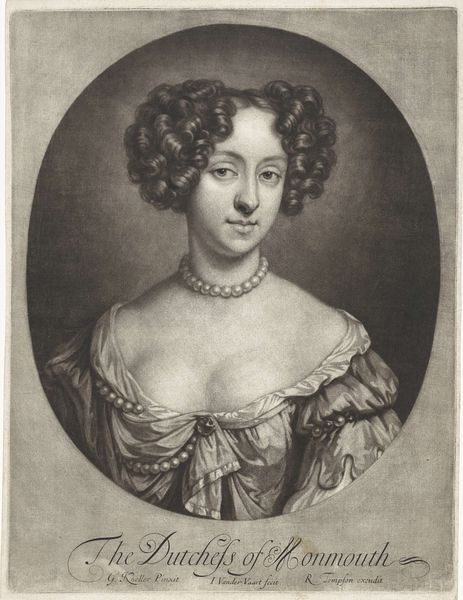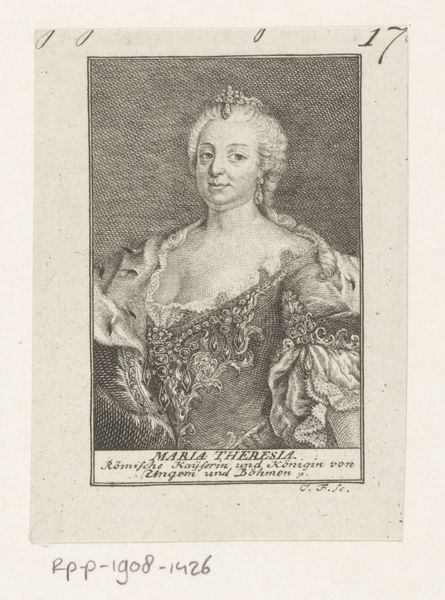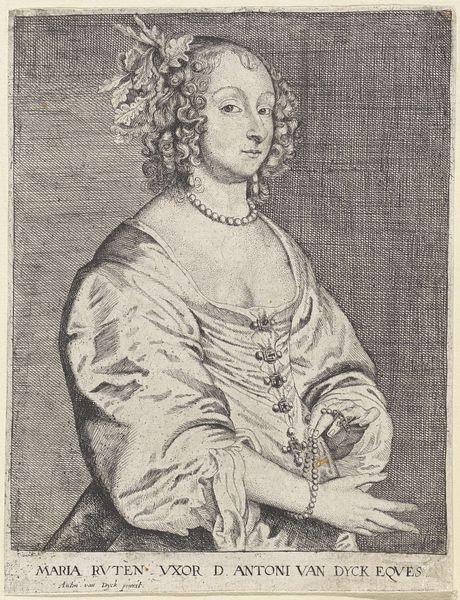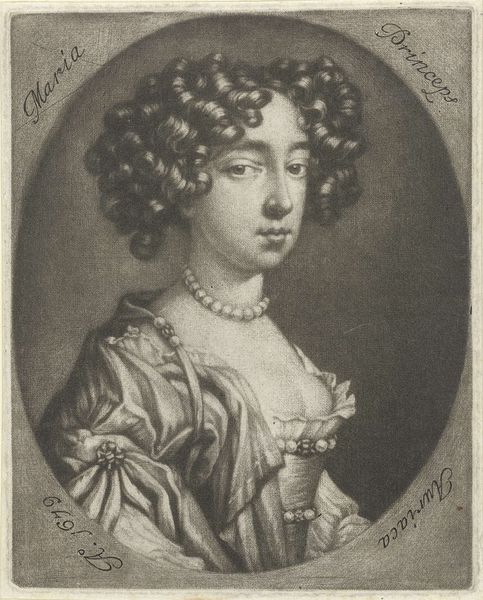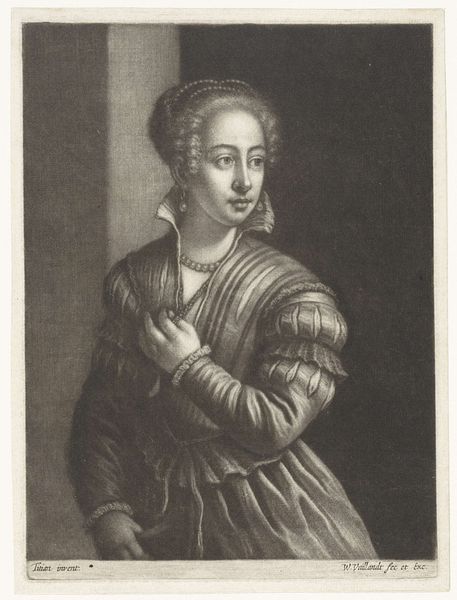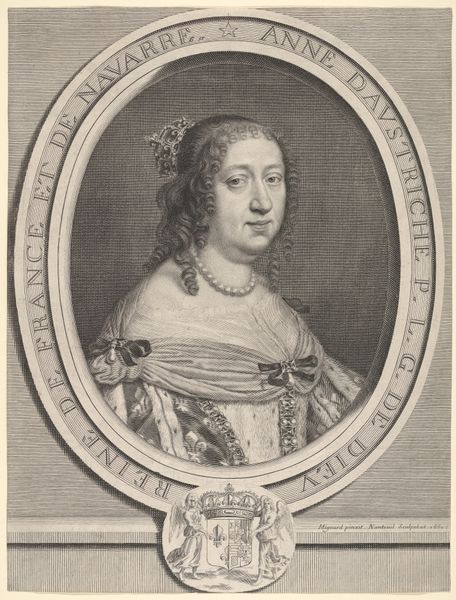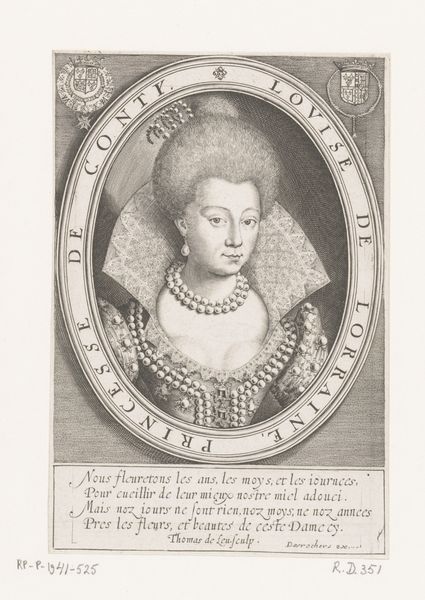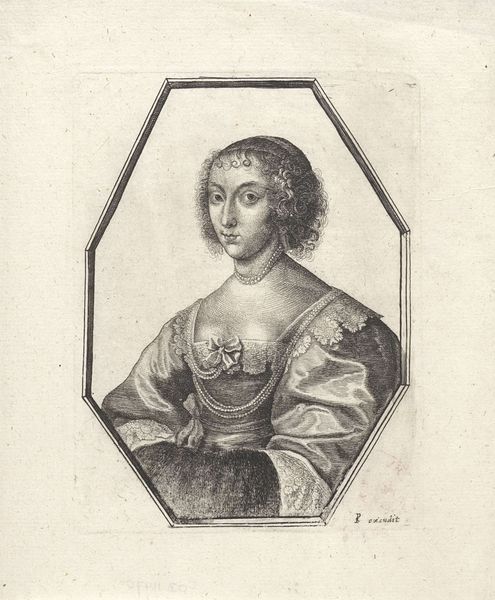
drawing, print, engraving
#
portrait
#
drawing
#
baroque
# print
#
engraving
Dimensions: sheet: 6 1/4 x 5 7/16 in. (15.8 x 13.8 cm)
Copyright: Public Domain
Curator: Ah, yes, Claude Mellan's "Portrait of Agathe de Châtillon," dating roughly from 1630 to 1656. A powerful piece of engraving. Editor: Indeed! Mellan captures Agathe in such detail. The crispness of the lines… it's incredible for an engraving. It’s a fairly straightforward portrait, but something about it feels quite… reserved, stoic even. What layers are at play here? Curator: Reserved is an interesting word for it. It’s true the composition adheres to Baroque portraiture standards, presenting her status through clothing and jewelry. But consider the engraving process itself. How does that mediate our understanding of gender and representation? What does it tell us about power in 17th century France? Editor: How so? The engraving process? Curator: Think about it: engraving demanded control, precision. This contrasts with the fluidity often associated, problematically, with femininity. By choosing such a structured medium to depict Agathe, Mellan might subtly be challenging, or at least playing with, existing gendered notions about women and emotional expression. Also, portraits, at this time, were deeply enmeshed with class. Consider, who had access to commissioning them, and to what end? Editor: Right! So it’s not just about *who* is depicted, but *how*, and the very act of creating such a permanent image was a statement in itself. Do you think the inscription contributes too? I see it bears a familial record to be unearthed, which must be quite unique... Curator: Exactly! It grounds her in a lineage and identity, offering agency that resists limiting interpretations of femininity and perhaps enabling deeper exploration. Ultimately, a dialogue opens, prompting us to think about not only who Agathe was but also how her portrayal fits within complex societal conversations around status, power, gender, and historical preservation through lineage. Editor: This portrait suddenly feels a lot less "reserved" and much more of a loaded cultural statement! I now see this artwork’s depth far beyond its surface. Thank you!
Comments
No comments
Be the first to comment and join the conversation on the ultimate creative platform.
